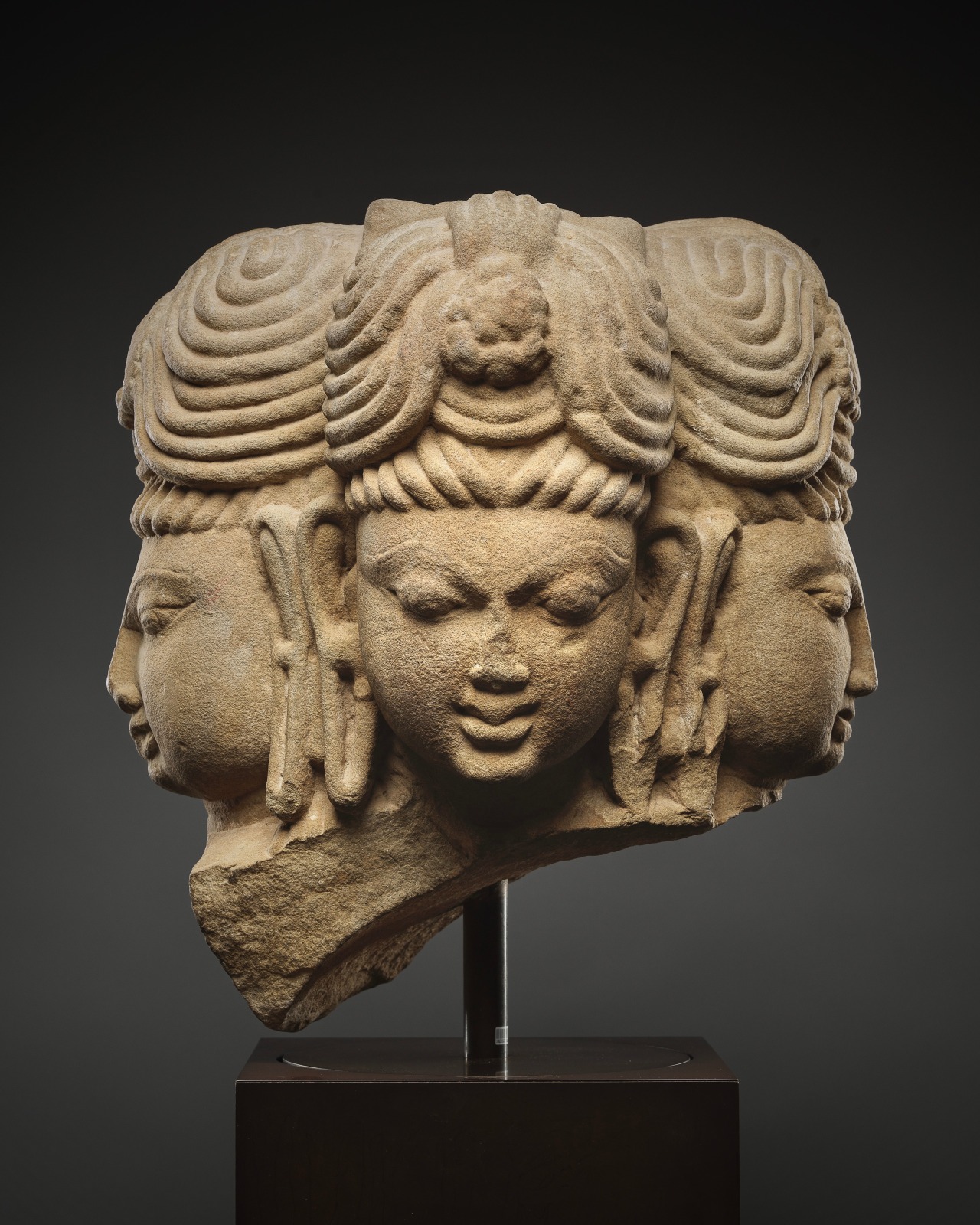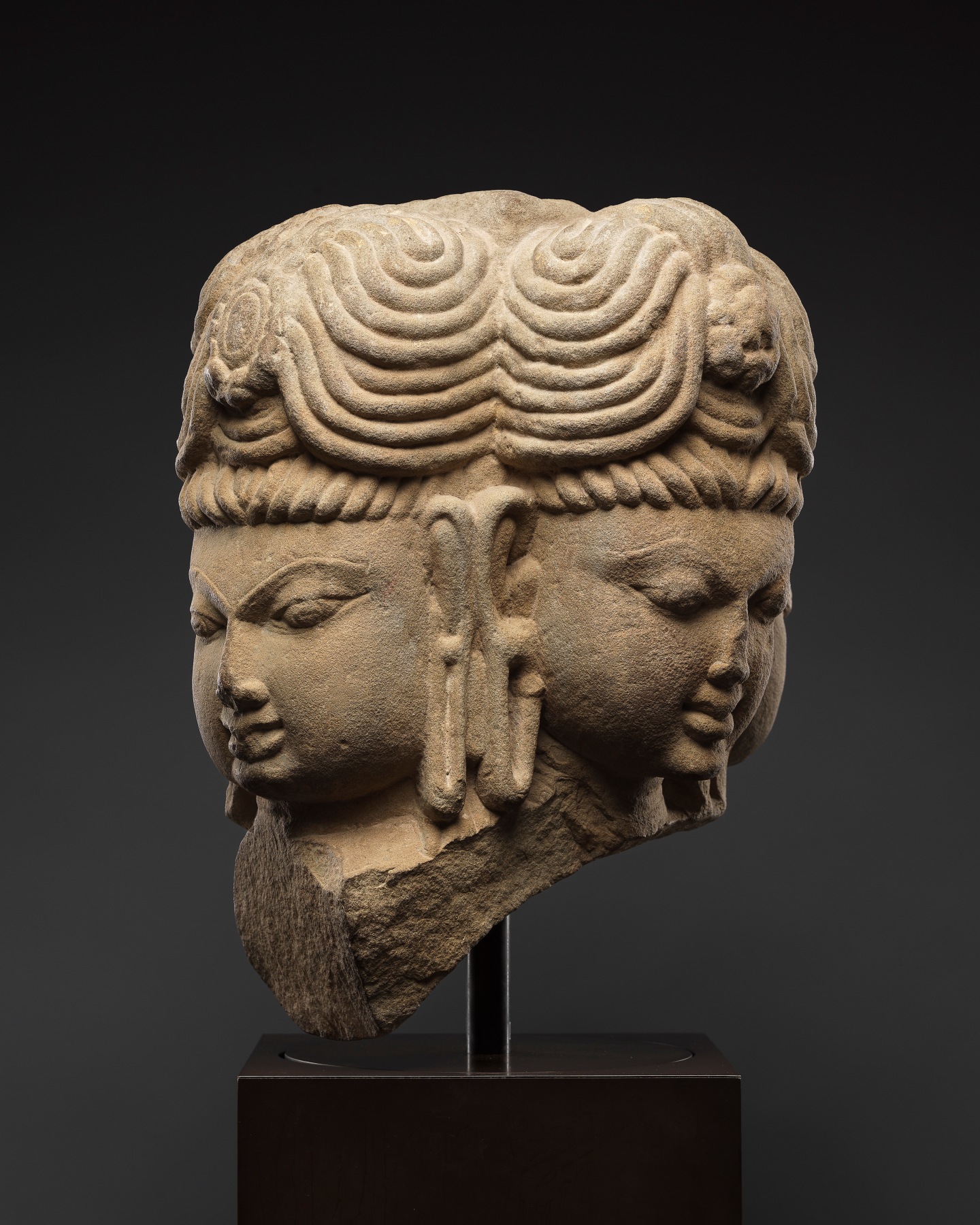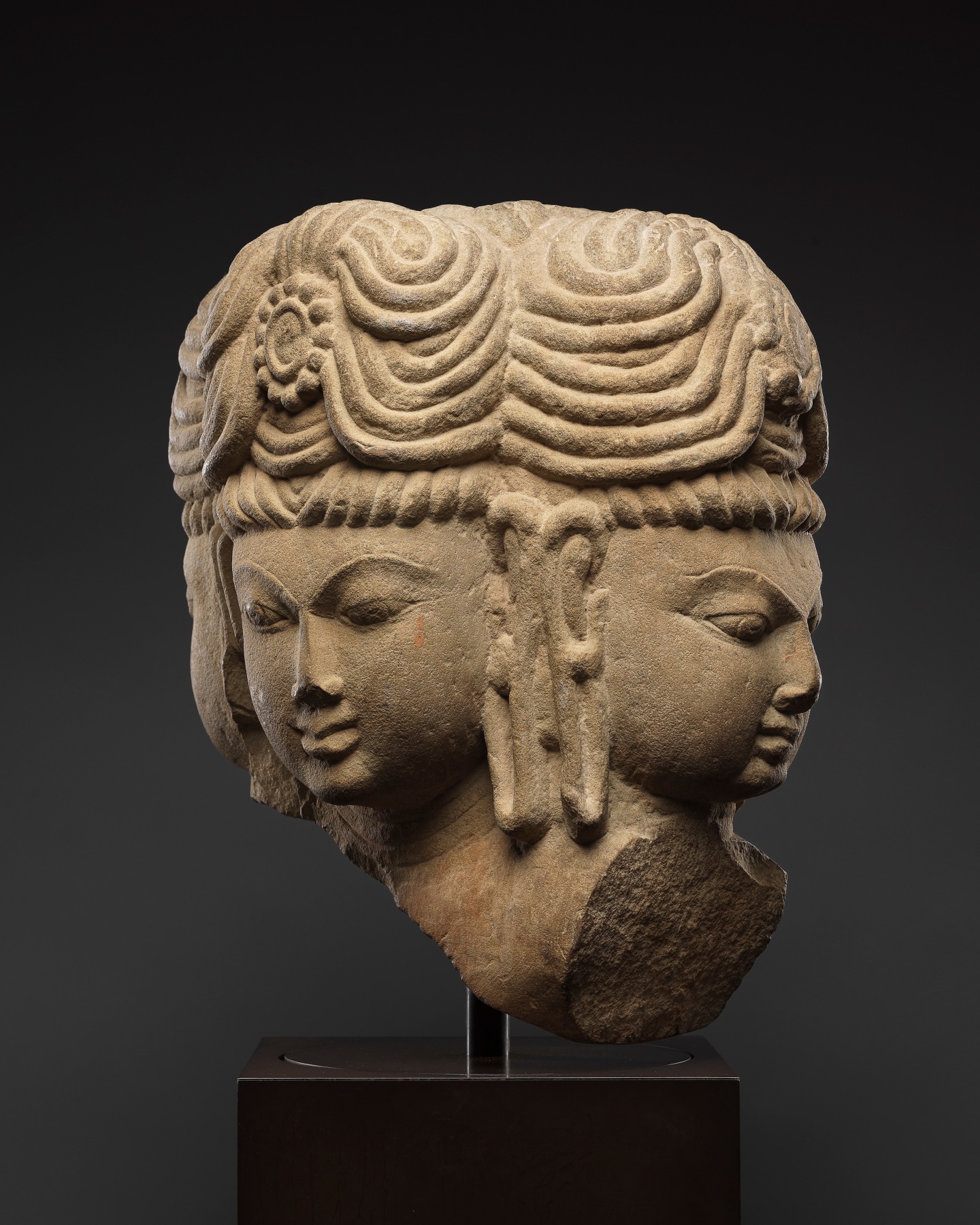
Provenance:
Christian Humann (Pan-Asian Collection), 1974-1982
Robert Hatfield Ellsworth, New York, 1982-1993
Carlton Rochell Asian Art, New York
European Private Collection, acquired in 2005
Published:
Pratapaditya Pal, The Sensuous Immortals, Los Angeles, 1977, p. 67, no. 36
Divine Incarnations: Art from India and Southeast Asia, Carlton Rochell Asian Art, New York, 2005, no. 11
In Hindu mythology, Brahma, the god of creation, forms part of the cosmic trinity (Trimurti) together with Vishnu, the preserver, and Shiva, the destroyer. Although his creative role is central to Hindu cosmology—he is said to have brought forth the universe, gods, and living beings from his own essence—Brahma’s cult gradually waned in favor of those of Vishnu and Shiva. As a result, his depictions in sculpture are relatively rare compared to those of the other two deities. Images of Brahma appear from the Gupta period onward, often as an attendant to Shiva or Vishnu rather than as an independent deity.
The four heads of Brahma hold deep symbolic meaning in both theology and iconography. They are said to have emerged so that he might behold the totality of his creation in all four directions. Each head recites one of the four Vedas, affirming his identity as the source of sacred knowledge and cosmic order (dharma). The heads also signify the four dimensions of consciousness—mind, intellect, ego, and conditioned awareness—or, in another interpretive tradition, the four yugas (cosmic ages) and the four varnas (social orders). Artists often show three faces frontally and one implied behind, emphasizing his omnipresence and omniscience. This multiple-headed form embodies the idea of a god who perceives all space and time simultaneously, transcending human limitation. Each head is represented with matted hair held in place with a floral clasp. A lotus situated in a square frame joins the heads along the top.
Each face is modeled with arched eyebrows, almond-shaped eyes, and full lips, the shared chignon is a mass of looped tresses secured by jeweled ornaments. These features are indebted artistically to the Gupta sculptural style that dominated Northern India in the 4th to 6th centuries, especially in Mathura, Uttar Pradesh.


